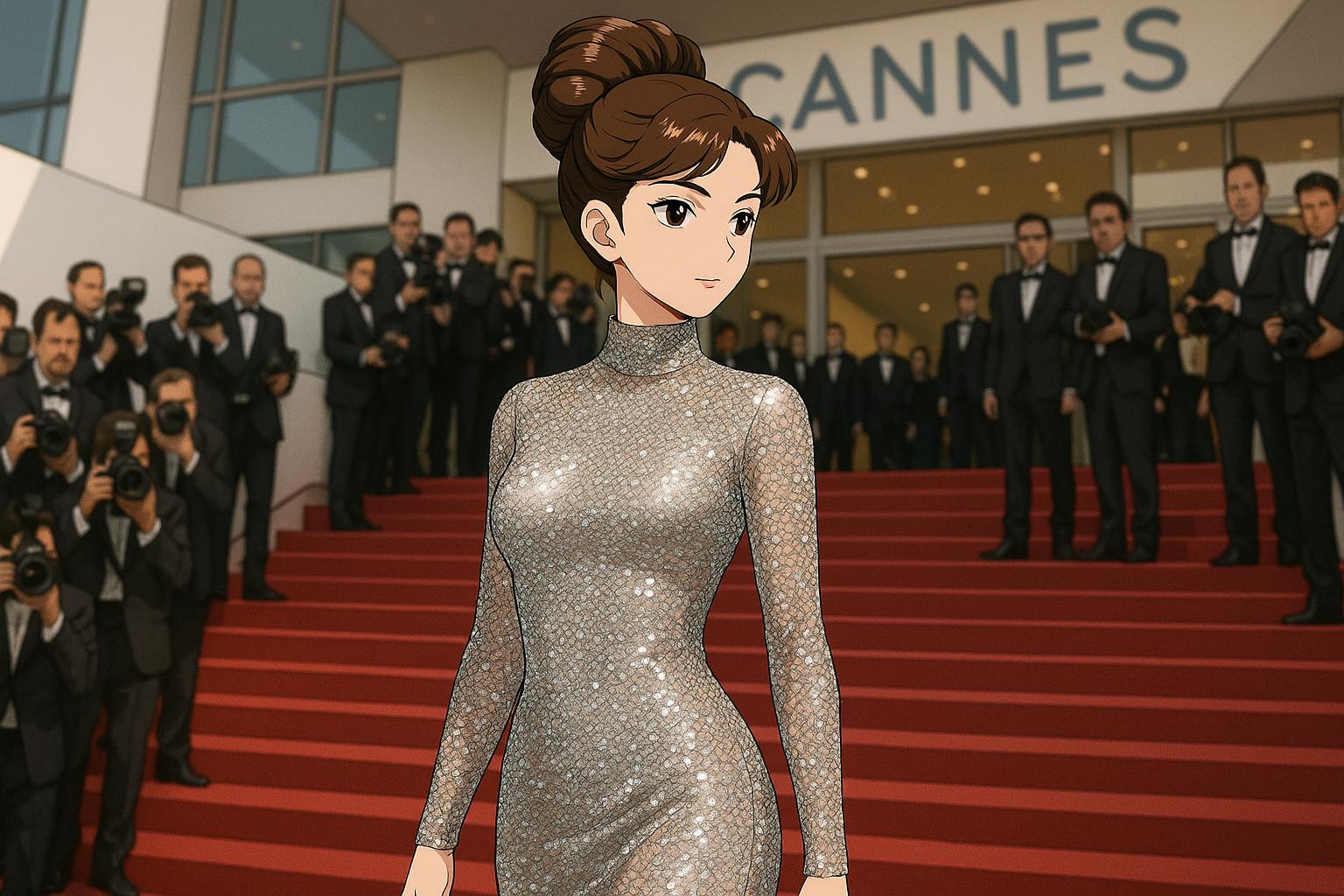Leomie Anderson attracted attention at the Cannes Film Festival during the premiere of Highest 2 Lowest with a striking outfit that seemingly defies the event’s newly implemented nudity rules. The British model, 32, made a bold statement in a silver mesh dress that left little to the imagination, showcasing a silhouette that highlighted her figure. She completed her look with strappy heels and styled her dark hair in an elegant updo.
This year, however, the festival has adopted stricter dress codes in a bid to curb the trend of revealing attire that has increasingly dominated red carpet appearances. Organisers have articulated a desire to reorient focus from celebrity fashion to the artistic achievements of filmmakers, with the new guidelines asserting that "nudity is prohibited on the red carpet, as well as any other area of the festival." Such rules reflect a shift towards modesty, notably responding to public concerns about decreasing decorum at high-profile events.
The festival's recent charter, aimed at establishing expected behaviour, has introduced a broader stance on attire, indicating preferences for traditional outfits such as suits, elegant gowns, and cocktail dresses, while deeming 'naked dresses' and excessively revealing characters as unacceptable. This move marks a significant departure from the festival's historical embrace of provocative fashion statements, considering how outfits worn by high-profile celebrities often overshadow the films being screened.
This decision to implement stricter guidelines appears particularly timely amidst a growing trend of ambitious fashion statements which have started to overshadow the cinematic elements of festivals. Just a few years ago, attendees like Bella Hadid left audience members in awe with daring looks that pushed boundaries, such as her sheer ensembles that drew significant media attention. Yet, the festival’s leadership now emphasises returning to its core values of celebrating cinema.
Interestingly, the shift toward a more conservative dress code coincides with the potential influence of broadcasters, such as France Télévisions, which is wary of airing nudity and may have contributed to the tightening of modesty rules. In light of these changes, filmmakers and artists attending Cannes now find themselves navigating a dual responsibility of showcasing their work amid evolving cultural recreations and public expectations regarding personal presentation.
As the festival unfolds, it is clear that the intersection of fashion and cinema will be closely observed. The balance between creative expression and adherence to newfound standards remains fragile, prompting questions about the future of personal style in red carpet culture. Meanwhile, this year's Cannes serves as a reminder of its esteemed history, having originated during World War II as an alternative to fascist-controlled film festivals, and now strives to retain its distinguished standing as a premier platform for cinematic exploration.
Compounding the challenges faced by filmmakers this year is the broader context of international tensions, particularly with new tariffs proposed by former President Trump affecting foreign films, drawing fears about their impact on cultural exchange and distribution. This backdrop adds a layer of complexity to the festival, reaffirming its role not only as a celebrated cinematic showcase but also as a reflection of the shifting tides in global relations.
As attendees prepare for an event marked both by the allure of high fashion and the gravity of artistic presentation, the Cannes Film Festival stands poised to navigate the ever-evolving landscape of cinema and style in the contemporary age.
Reference Map:
- Paragraph 1: [1]
- Paragraph 2: [2], [3], [4]
- Paragraph 3: [5], [6]
- Paragraph 4: [1], [5], [6]
- Paragraph 5: [5], [7]
- Paragraph 6: [1], [5]
- Paragraph 7: [4], [6]
- Paragraph 8: [7]
Source: Noah Wire Services
